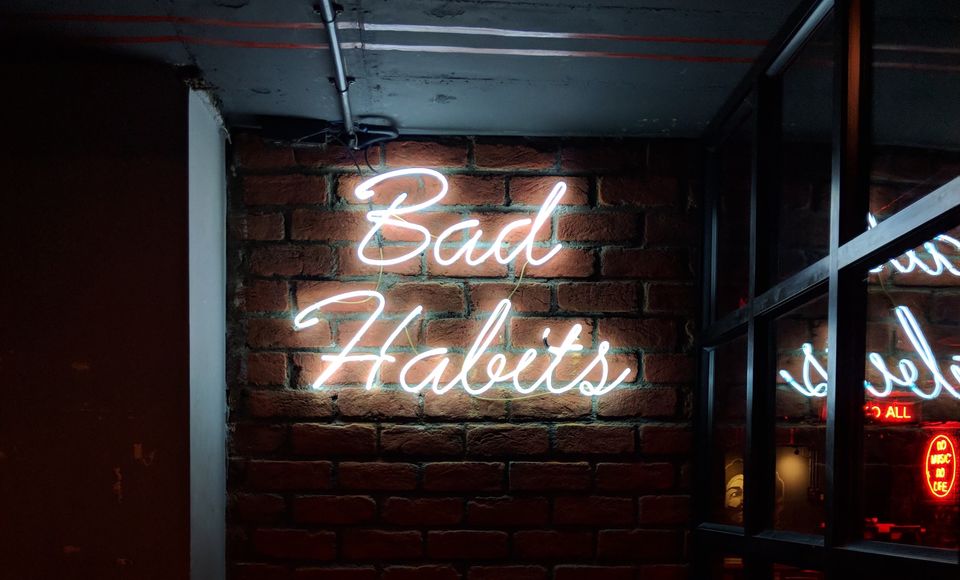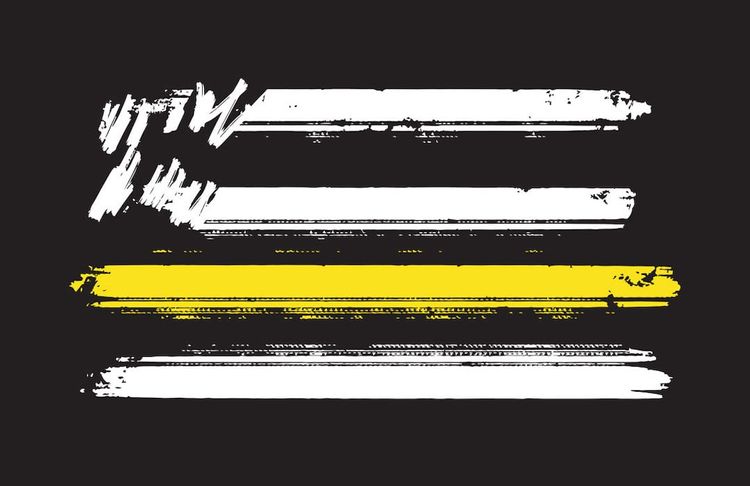The Psychology Behind How to Break Bad Habits

We all have bad habits. Whether you have a tendency to bite your nails, talk with your mouth full, or you’re a chronic procrastinator, bad habits are harmful to our vision of ourselves and who we want to be.
The problem is, our brains are wired to turn our everyday interactions into habits and routines. When we perform certain actions—such as riding a bike, driving a car, or tying our shoelaces—on autopilot, this frees our brain up to focus on other things.
The creation of habits and routines in itself isn’t a bad thing, far from it. But just as easily as you can form a good habit, a bad habit can be formed. And they can be extremely difficult to break.
In this article, I’m going to dive into the psychology behind how to break bad habits. Starting at their very formation, I’m going to look into what causes bad habits, followed by a clear three-step method for how to break bad habits and replace them with a more positive alternative.
What is a Bad Habit?
A bad habit is a frequent behavior pattern that you deem to have a negative impact on a part of your life. A bad habit tends to be performed time and again, and is distinguished from an addiction or mental illness by its relationship to willpower.
As a general rule, if you are able to use willpower to “break” a bad habit, it was just that; a habit. If you are unable to use willpower to break a bad habit, you are likely feeling some form of addition or suffering from a certain level of mental illness.
While there are many activities that are generally agreed upon to be bad habits; such as smoking, excessive drinking, or grinding your teeth, what you consider to be a bad habit may be considered an entirely reasonable activity by someone else, and vice versa.
For example, you may consider “watching too much television” to be a bad habit that you would like to break, but for someone who is just getting started in a television writing course, watching a lot of it comes with the territory. Similarly, you may wish to “spend less time on your phone,” but for someone who runs their business on their phone; whether they’re sending emails and text messages all day, or keeping up their branded social media accounts, this is the exact opposite of what they want to be doing.
How Long Does it Take to Break a Bad Habit?
The common belief that it takes 21 days to make or break a habit has faced constant scrutiny since it was first proposed. In my book on morning routines we noted:
Give each new element you bring into your morning routine a fair shot. Trying something for just a couple of days before giving up isn’t enough. Though opinion varies on how long it takes for something to become a habit, we suggest you give each new element at least a one- or two-week trial to see how you like it.
With that said, I believe 21 days is a reasonable rule to work with, so long as you don’t become despondent if you haven’t managed to break a particular habit in this exact timeframe. Consider the 21 day rule to be a suggestion, rather than an exact scientific calculation.
Why is it So Hard to Break a Bad Habit?
Attempting to break a bad habit can be difficult because performing the habit in question day after day, week after week, and year after year has become your default state. In a way, the bad habit has become a part you.
Refer back to the 21 day “rule” above. Whether the exact number of days it will take you to break a particular habit is 21 days, 42 days, or more, the fact of the matter is the habit you are trying to break has likely been with you for some time; likely many months, years, and possibly even decades.
If the bad habit in question is one that you have repeated daily for many years, it stands to reason that attempting to break it in a short space of time is going to be difficult. But doing so is not impossible, and that is what the rest of this article is going to tackle.
How to Break Bad Habits
Humans are simple creatures. We want little more out of life than to keep doing the things we enjoy doing, and to do less of the things we don’t enjoy doing. Unfortunately, living in a way in which we never experience discomfort is not only unworkable, doing so would quickly become its own kind of prison.
With that cheery thought in our minds, read on to discover a clear three-step method for how to break bad habits and replace them with a more positive alternative:
1. Define the Habit You Want to Break, and Its Triggers
All habits, good and bad, are formed through repetition. In order to break a bad habit it is necessary for us to first define, then break, this repetition.
I’ve written numerous articles over the years on the topic of stacking habits. As I wrote in my book on morning routines, habit stacks are a series of linked actions:
Waking up triggers you to go to the bathroom, which triggers you to brush your teeth, which triggers you to put on your workout clothes, sit down to meditate, or put the kettle on to begin brewing your favorite cup of tea or coffee.
Defining what happens just before you perform the bad habit in question is the key to starting your journey toward breaking it.
But let’s back up for just a moment. In order to truly be able to break a bad habit, you first need to ask yourself why you want to break (or change) this habit in the first place? I’m not talking about surface-level reasons either—I want you to dive deep inside of yourself and really tell yourself why this habit is harmful, and what breaking it will do for you.
For example, if you’re a chronic procrastinator who barely manages to complete anything because your attention is consistently being pulled in another direction, you can tell yourself that if you can break the habit of procrastination you will be more productive, creating more opportunities, more connections, and (likely) more money in the bank over the long term. On a deeper level, if you’re been a smoker your whole life, tell yourself to your face that if you can break this habit you will potentially add years to your life; years that can be spent watching your children, grandchildren, and great-grandchildren grow up.
Once you have established your reasons for wanting to break this habit, you need to list the aforementioned triggers that happen just before you perform the bad habit in question. Ask yourself, do these triggers act alone or are they a part of a larger pattern of behavior?
Once you have your reasons for wanting to break this habit, the triggers that cause you to perform this habit, and any larger view of how these triggers work together, it’s time to move on to choosing a substitute for your bad habit.
2. Choose a Substitute for Your Bad Habit
Unfortunately, knowing how to break a bad habit means knowing that you often can’t simply “break” a bad habit; more often than not, you need to replace it with something else instead.
The reasoning behind this is simple. Returning again to the idea of triggers and habit stacks; when you stack one habit on top of another, or experience a trigger that tells your brain that it’s time to perform your bad habit, your brain now expects this habit to take place. In this moment you will feel a pull to perform this bad habit, an urge that, with nothing to replace it, will be difficult to ignore.
However, when you substitute your bad habit for a good one, you are ensuring that the habit stack remains unbroken, and your brain has somewhere to turn when it experiences the trigger that preceded your old habit.
Here’s an example to better illustrate what I’m driving at. Let’s say that you have found yourself going for a drink or two every night after work. This started out as just a casual thing, heading over to a bar with a couple of friends on a Friday night after a long week. Soon you realize that you are performing this ritual every evening, whether or not you have company. You’re still enjoying yourself, but as this casual occurrence has turned into a full-blown habit, you are worried about what may happen if you allow this bad habit to continue.
Recognizing that breaking the bad habit of going to a bar after work and just heading home instead is unlikely to hold up, you sign up for a gym membership and start going to the gym after work instead. This way, you get to keep up the ritual of winding down in a third space between work and home, while having a positive, not a negative, effect on your body.
The substitute you choose to replace your bad habit will vary depending on the habit itself, as well as your personal preferences. You may have heard (or experienced) the analogy that smokers need something to do with their hands after quitting smoking; this is the exact same idea. When you can substitute your bad habit for a positive alternative, you’ll be well on your way to breaking the bad habit for good.
3. Aim for Success, Plan for Failure
The last step in knowing how to break a bad habit rests on both your attitude and your level of preparedness.
In order to successfully break a bad habit it is essential that you believe you will be able to break it, even when you believe that the odds are stacked against you. You must be persistent in your quest to break the habit, but at the same time you must be patient with the process, and with yourself. As I noted earlier in this article, you must consider the 21 day “rule” as a suggestion, rather than an exact scientific calculation. The more ingrained a habit is in your life, the longer it will take to break.
This is what I mean by “aim for success, plan for failure.” You must reward yourself at even the slightest of milestones (one day without performing the bad habit, two days, three!). You must visualize yourself shaking off this bad habit for good... but at the same time, you must have a process in place for the slip-ups (or near slip-ups) that would otherwise make you feel that you’re back at square one.
While this won’t be necessary for every bad habit you wish to break, for the larger, sticker habits, I recommend joining a support group, either online or—if your bad habit is a common one—in person, where you can share tips with other people who are struggling to let go of the same bad habit as you, while at the same time working to support each other toward letting go of this habit altogether.
When you aim for success, but plan for failure, you ensure that you’re giving yourself every possible chance to take your bad habit to task.
Knowing how to break bad habits and replace them with more positive alternatives is a skill that will serve you well throughout your entire life.
If you’re interested in hearing more from me, be sure to subscribe to my free email newsletter, and if you enjoyed this article, please share it on social media, link to it from your website, or bookmark it so you can come back to it often. ∎


